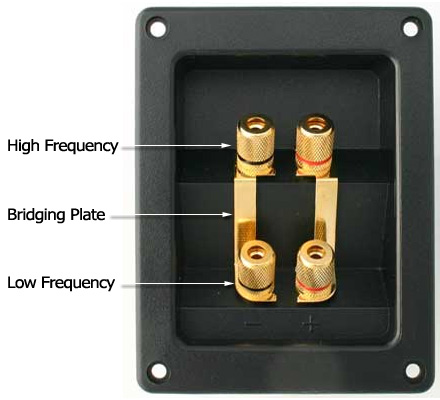Bi-amping used to be the sole providence of high end audio. I’m therefore suprized that many modern mid-fi speakers have the ability at all. But, as long as it’s there why not play around with and see if it makes any difference. Most modern, higher end 7.1 AVRs also have the ability to utilize the “surround back” speakers to another zone or to bi-amping your front speakers if you like.
That said, we are still talking about a very different version of bi-amping from what i knew it to be in the 1970s, i.e. passive rather than active. The good news is that passively bi-amping just requires removing jumpers (or “bridging plate”) and hooking up directly to the binding posts on the speakers and let’s the speaker manufacturer decide what happens from there. Less control, but also less ways to screw it up if the listener doesn’t have knowledge of speaker crossover networks.
Active crossovers (XOs) require some basic knowledge of speaker design, crossover designs, and the limitations of the individual drivers. I built up a small pair of speakers in the 70s with Kef B110 bass drivers and T27 tweeters. I was building off a schematic but tweaked the parts of the passive crossover network with better quality than what the manufacturer (they were Rodger’s LS35A’s) provided and they sounded AMAZING and i saved a ton of $$$ by buying the drivers separately and building them myself. As a side note, those 70s speakers (from the manufacturer, not my home-made version) have become highly collectable and I’ve seen them advertised for up to 10 times their original selling price of $400, which was high at the time.

